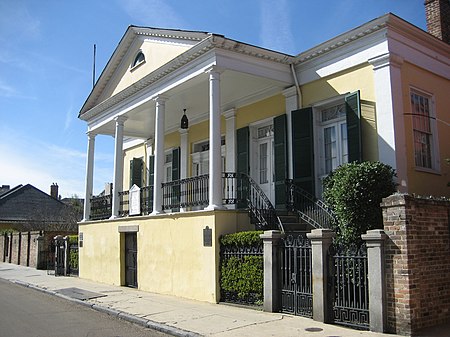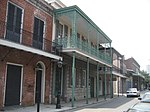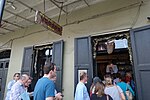Beauregard-Keyes House
1826 establishments in LouisianaFrench QuarterHistoric house museums in LouisianaHouses completed in 1826Houses in New Orleans ... and 5 more
Literary museums in the United StatesMuseums in New OrleansP. G. T. BeauregardUse mdy dates from March 2014Victorian architecture in Louisiana

The Beauregard-Keyes House is a historic residence located at 1113 Chartres Street in the French Quarter, New Orleans, Louisiana. It is currently a museum, the BK Historic House and Gardens, that focuses on the past residents and associates of the house. These include its wealthy, pre-civil war French Creole inhabitants, the people they enslaved, the Italian immigrant families who moved in after the civil war, their tenants, and American author Frances Parkinson Keyes.
Excerpt from the Wikipedia article Beauregard-Keyes House (License: CC BY-SA 3.0, Authors, Images).Beauregard-Keyes House
Ursulines Avenue, New Orleans French Quarter
Geographical coordinates (GPS) Address Nearby Places Show on map
Geographical coordinates (GPS)
| Latitude | Longitude |
|---|---|
| N 29.960833333333 ° | E -90.061111111111 ° |
Address
Ursulines Avenue 611
70116 New Orleans, French Quarter
Louisiana, United States
Open on Google Maps









